Location: Boubon, Niger
We stepped out of the harsh morning sun and into the dimly lit hut constructed out of misaligned cinder blocks and crumbling slabs of dry mud. As our eyes adjusted, we made out the smiling face of a middle aged women. Her slight paunch emphasized her jovial expression and her laugh was exactly as you would expect from a woman of this demeanour and stature.
Her nephew, who had been the one to invite us into their home in order to witness the Nigerien pottery process, offered us a seat on the raised bed platform. He introduced his aunt, Goudou (Goo-do), as we shifted trying to find a comfortable position on the thin grass mat separating us from the intertwined sticks and rope that made up the bed.
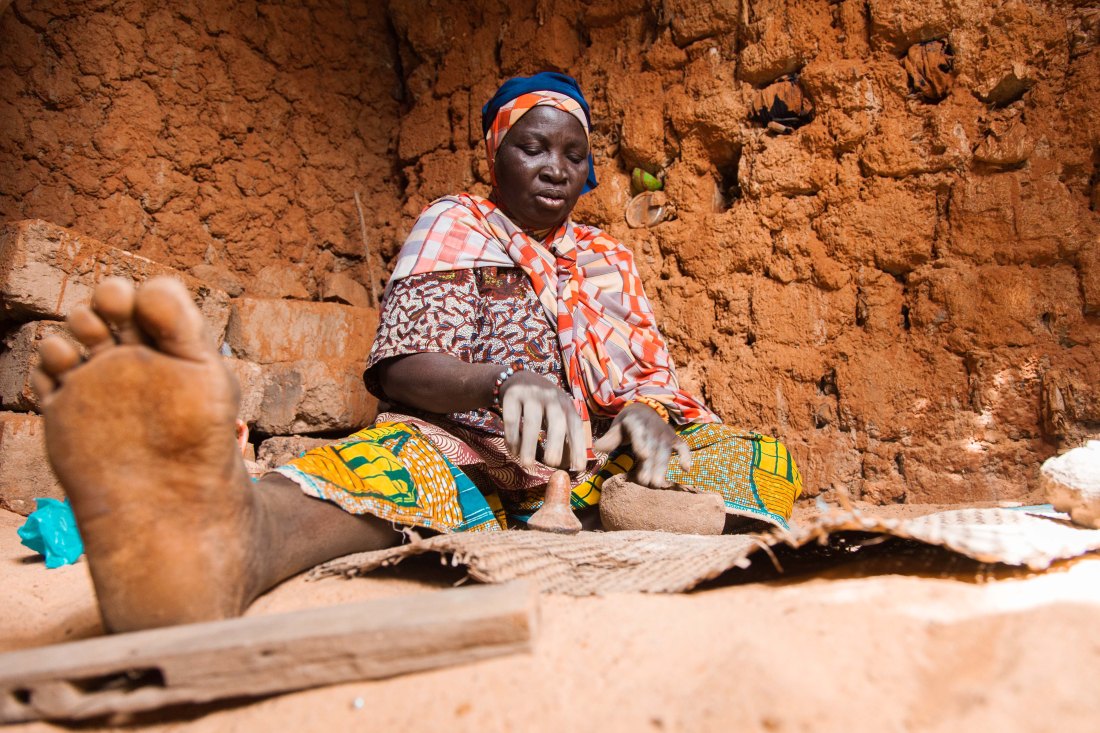
Goudou casually used her hand to scoop out a shallow depression in the dry sand floor as she conversed with us, using her nephew to translate from Zarma into French. She pulled a small grass mat over the hole and plopped down a shapeless lump of wet, river clay onto the mat with a satisfying squelch. Muddy water droplets scattered everywhere, accessorizing the mat’s intricate chevrons. Goudou sprinkled a coarse powder onto the clay and as she worked it in, she explained it was the crushed and pounded remnants of imperfect pottery which is used to strengthen the new clay.
Maybe ignorantly, I had anticipated the use of a pottery wheel during at least some portion of the experience, but with none to be seen around the dim interior, I was left to watch incredulously as Goudou slowly worked the clay with a small, curved press. To begin, her experienced hands shaped the powder infused clay into a elegant sphere which she gently laid to rest in the depression. She used the press to firmly crater the sphere. Slowly deepening the center, making the walls both thiner and higher as she went.
When satisfied, Goudou produce another shapeless lump of clay. She deftly folded it out into an elongated rectangle which she then wrapped around the opening of the pot. The resulting neck was as grotesque and out of place as that of Frankenstein’s monster. Unfazed, Goudou plucked a protruding piece of straw from the wall with one hand while wetting the pot neck with the other. Using a practiced precision, she transitioned the wet clay of the neck almost seamlessly into the body.
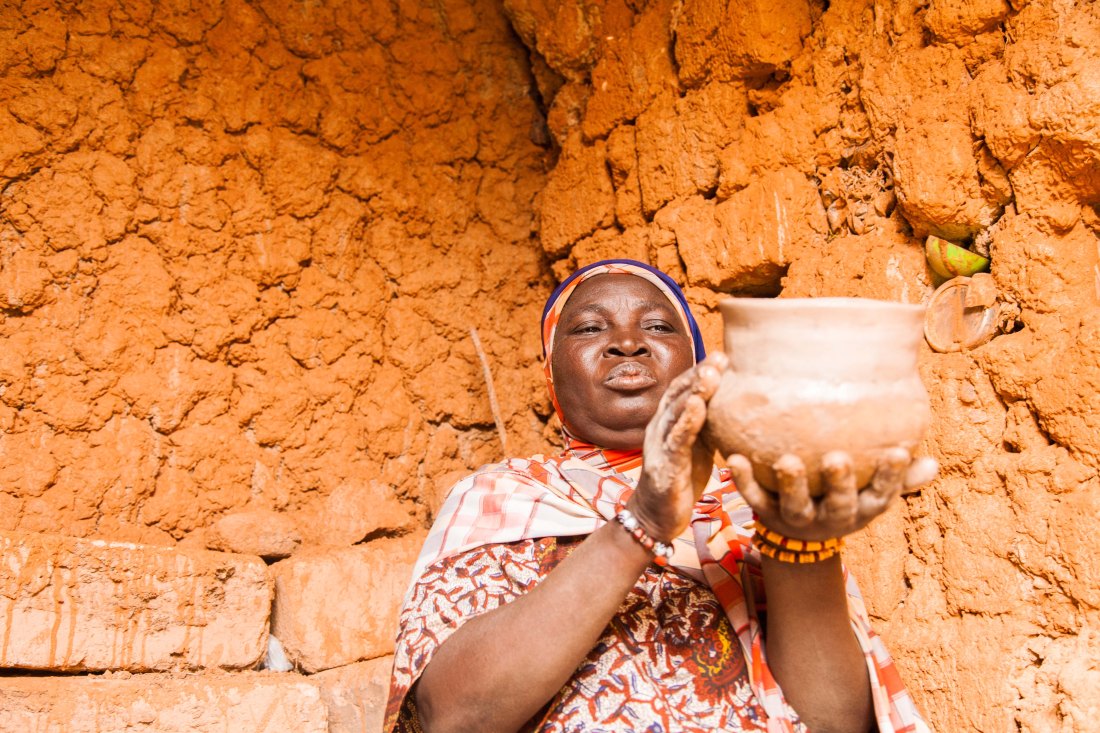
Not unlike an over-enthused cooking show host, Goudou set aside the freshly formed pot and produced a similar, but dry one. She explained the pot she had just finished would need to sit in the sun for almost a week before if could be painted and fired in the communal village kiln. As she walked us through the drying process, her hands worked on autopilot to bring out several cracked and splattered containers from their various nooks. With no regard to her work station, she splashed indiscriminate amounts of water into each container to mix with the materials caked on their respective bottoms.
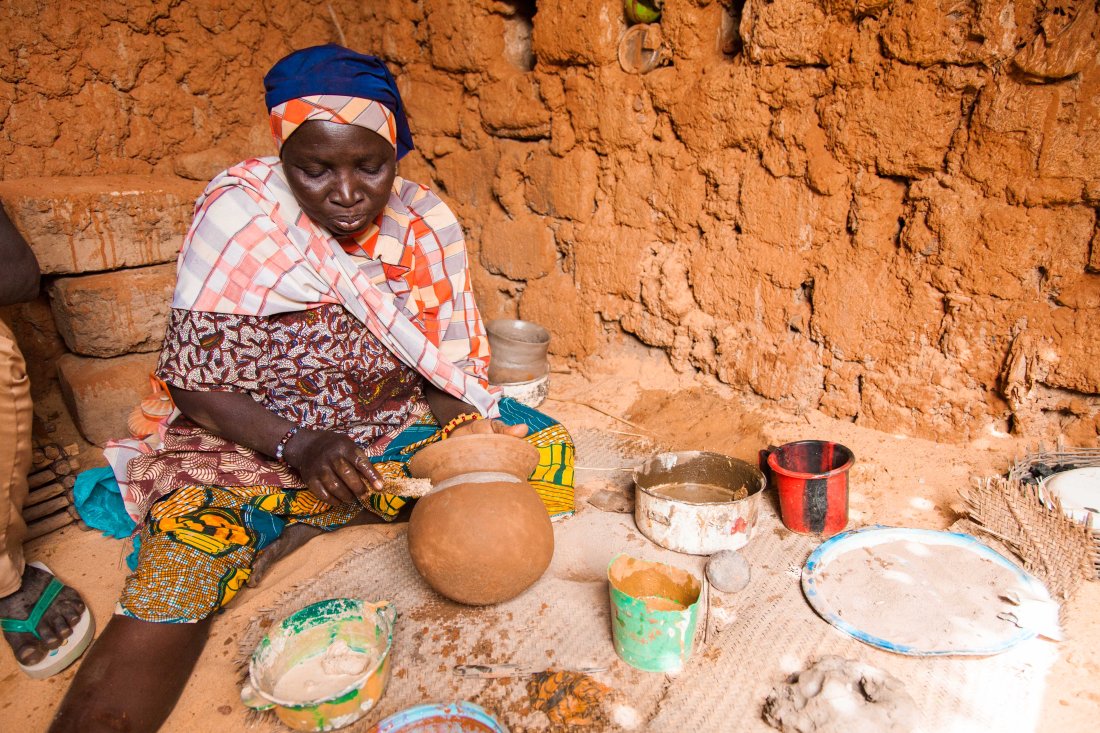
Sensing the confusion in the room, Goudou’s nephew emerged from the shadowy doorway in order to explain these were the paints with which Goudou decorates the pots. Each one is made from a local mud or crushed rock and applied to the pots with a discarded millet stalk.
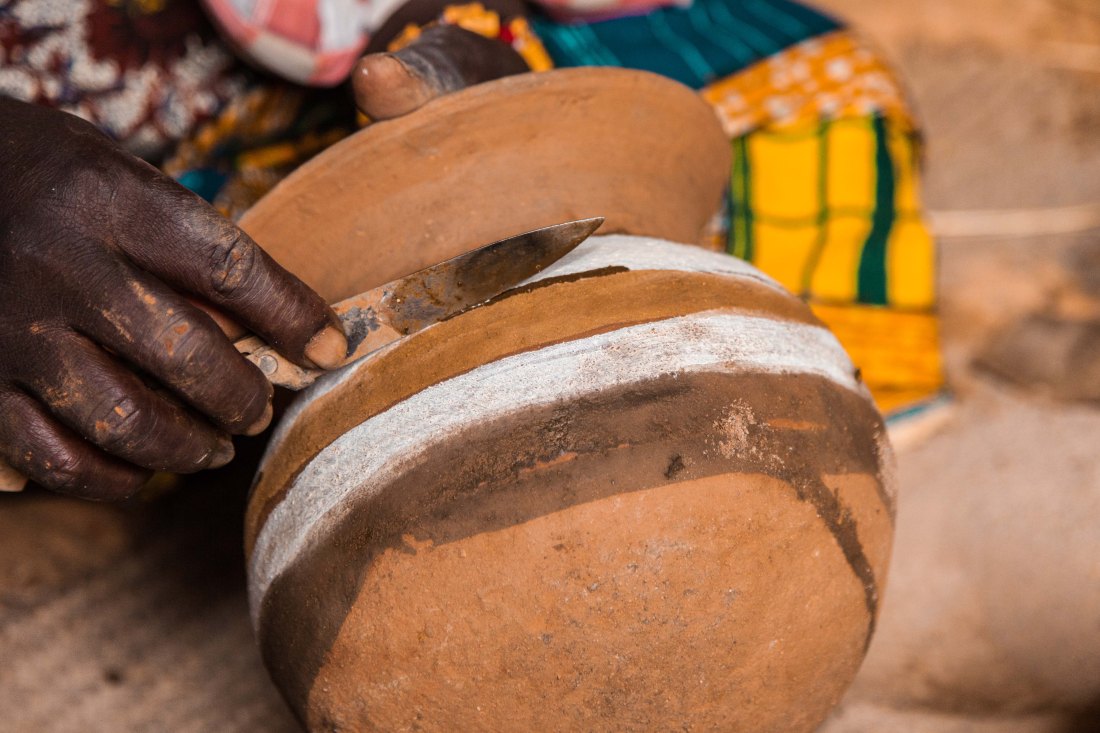
The stalk applied the paint with an incredible ease and flow. After several coats, Goudou literally cut in each painted band using a knife in order to achieve the fine lines impossible with even the most delicate of stalks.
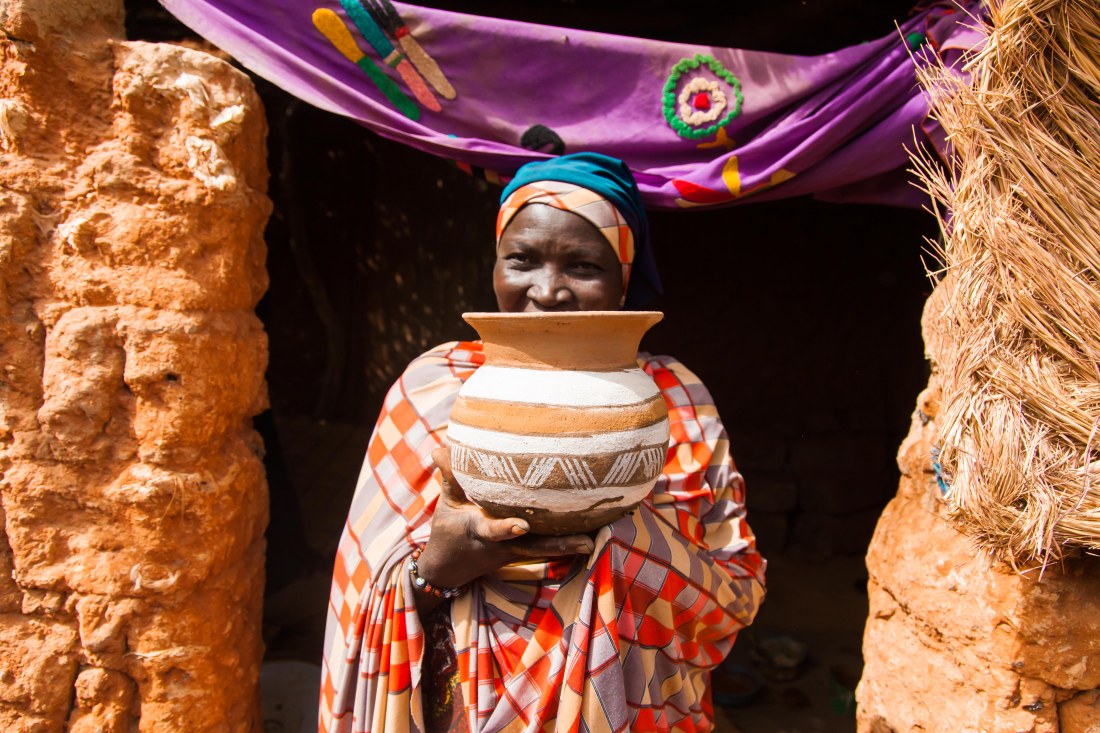
Goudou also used the knife to repeatedly cute white diagonals into the darkest layer, creating an eye catching and high contrast design.
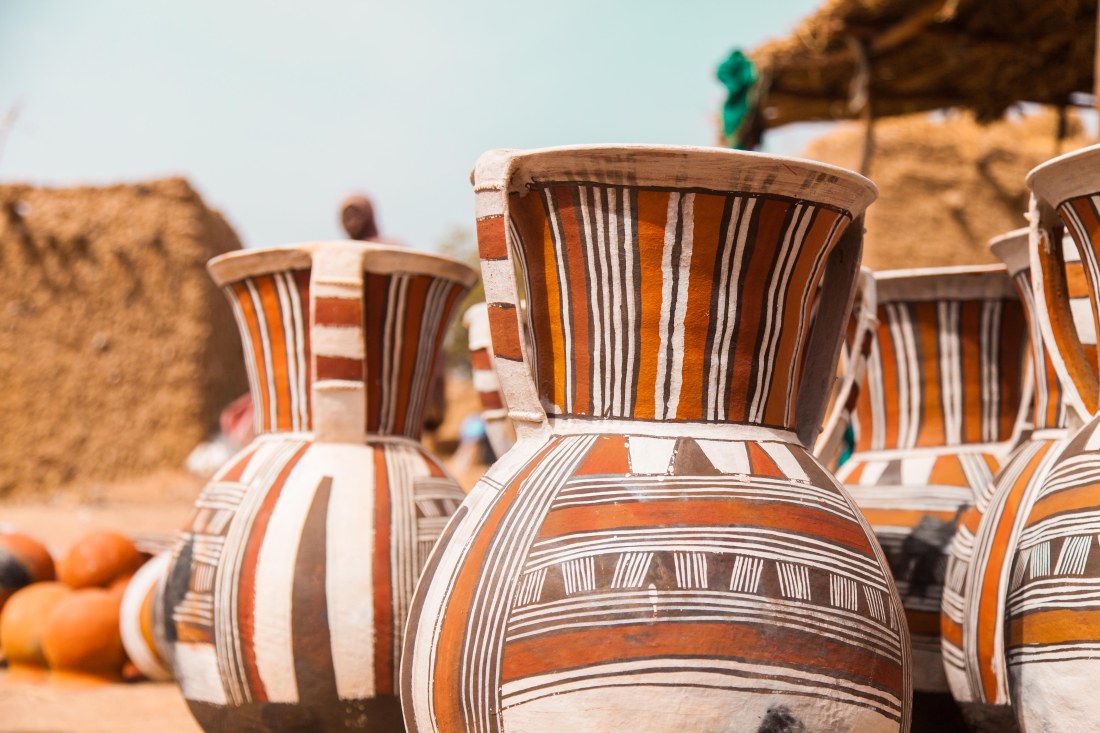
As Goudou put the final touches on the pot, we could see pride swell in her eyes. She knew her work was neither perfect nor refined, but she knew what sat in front of us now was something she had created out of nothing. This is the way her family has made pots for generations. The practice is how she supports her family, how her mother supported their family, and how the generations before had supported theirs. It is a practical trade for Goudou, but it is also a connection to both the land on which she lives as well as the generations before her who have toiled in the exact same manner.

